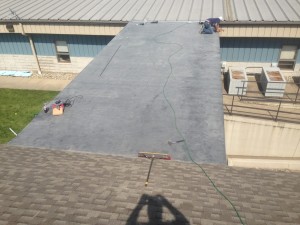 Low-slope facility roofs need greater weather protection than high-pitched roofs. Rubber roof installation involves the application of single-ply ethylene propylene diene monomer (EPDM), which delivers a tough waterproof roof surface. After a professional installs a rubber roofing system, you can expect your new roof to last for decades without deterioration. The rubber remains flexible, even during frigid weather, and installation costs are budget-friendly.
Low-slope facility roofs need greater weather protection than high-pitched roofs. Rubber roof installation involves the application of single-ply ethylene propylene diene monomer (EPDM), which delivers a tough waterproof roof surface. After a professional installs a rubber roofing system, you can expect your new roof to last for decades without deterioration. The rubber remains flexible, even during frigid weather, and installation costs are budget-friendly.
The Benefits of Installing an EPDM Roof
The best test of any rubber roof installation is how well it performs under day-to-day conditions. Field studies indicate EPDM is among the most durable choices for low-slope roofing. Key benefits of this type of roof installation include:
- UV resistance
- Thermal shock durability
- Ozone and weather resistance
- Superior wind uplift resistance
- Intensified tensile strength
- Hail resistance
- Accommodates structural movement
- Fire resistance
Another advantage of a rubber roof install is the wide variety of available application methods. EPDM can be fully adhered, ballasted or mechanically attached, making it suitable for nearly every facility design or purpose. EPDM is, dollar-for-dollar, one of the best values in low-slope roofing systems.
